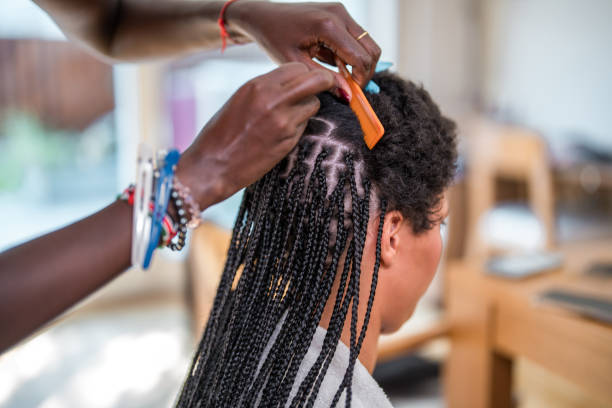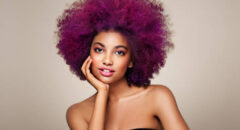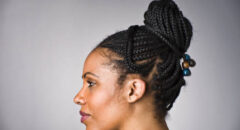
During the winter months, protective hairstyles are on the minds and hearts of many naturals. But is protective styling really “protective”? What exactly are we protecting our hair from? Can you get through the winter without them?
READ: African American Braided Hairstyles: How Braids Were Used To Keep Our Ancestors Alive
Seasoned hairstylist, educator and editorial stylist Roni Jones shares 7 truths about “protective styling”:
1. Hydrated hair is protected hair.
According to Roni, “Hydrated hair, which is when hair is the strongest, is when the hair is best protected.” Acquiring hydrated hair requires a thorough regimen of cleansing and conditioning with water-soluble, water-based products with botanically-based ingredients.
Using traditional “protective” styling as a means of protecting your hair from the elements won’t matter if you’re not keeping your hair hydrated regularly.
2. Braids, crochets, twists, wigs and weaves are alternative styling options.
Whether it’s for vacation, preference, boredom, creative expression, or something we do to give ourselves a break from our maintenance routines, alternative hairstyling allows us to avoid the work required to achieve and maintain healthy hair or keeps us looking polished when we haven’t yet learned our hair and how to properly care for it.
RELATED: Protective Hairstyles for Natural Hair
3. Alternative styling does not make your hair grow.
Our hair grows at about half an inch per month. Coupling that rate of growth with a dope hair care regimen results in attaining length. While it seems that rocking an alternative style results in hair growth what you’ve experienced was the retention of that half an inch of hair that was destined to emerge from your scalp. Alternative styling doesn’t change the rate of growth; it prevents us from over-manipulating the hair which results in length retention.
4. Alternative styling does not improve your hair.
When going into any braids, weaves, twists, wigs, etc. for an extended amount of time with dry damaged hair you will come out of those styles with guess what? Dry, damaged hair. Before any alternative styling involving the use of extension hair, your hair should be clean and deep conditioned with a quality moisturizing conditioner (if you think your hair needs a protein treatment before installing, it is not the time for a “protective” style), says Roni.
Alternative styles are best suited for those whose hair is in a healthy, hydrated state. Those with weak, thirsty, brittle or damaged hair should avoid these styling options at all costs.
5. Synthetic hair can compromise your cuticle.
According to Roni, “When synthetic materials rub against our hair, the outermost layer known as the cuticle becomes compromised. Incorporating a heavy moisturizer with ingredients that coat the hair during installation will








